316L Stainless Steel Powder
$0.00
316L Stainless Steel Powder
| Product | 316L Stainless Steel Powder |
| CAS No. | 12597-68-1 |
| Appearance | Metallic Gray Powder |
| Purity | ≥99%, ≥99.9%, ≥95%(Other purities are also available) |
| APS | 1-5 µM, 10-53 µM (Can be customized), Ask for other available size range. |
| Ingredient | Fe-16-18Cr-10-14Ni-2-3-Mo |
| Density | 7.99g/cm3 |
| Molecular Weight | N/A |
| Product Codes | NCZ-DCY-340/25 |
316L Stainless Steel Description:
316L Stainless Steel Powder is one of the numerous advanced ceramic materials manufactured by Nanochemazone. Nanochemazone produces too many standard grades when applicable, including Mil Spec (military grade); ACS, Reagent and Technical Grade; Food, Agricultural and Pharmaceutical Grade; Optical Grade, USP and EP/BP (European Pharmacopoeia/British Pharmacopoeia) and follows applicable ASTM testing standards. Typical and custom packaging is available. Additional technical, research and safety (MSDS) information are available. Please request a quote above for more information on lead time and pricing.
316L Stainless Steel Powder Related Information :
Storage Conditions:
Airtight sealed, avoid light and keep dry at room temperature.
Please contact us for customization and price inquiry
Email: [email protected]
Note: We supply different size ranges of Nano and micron as per the client’s requirements and also accept customization in various parameters.
316L Stainless Steel Powder
316L Stainless Steel Powder(ss316L) 316L is a stainless steel grade, which is classified according to the metallographic structure and belongs to austenitic stainless steel.
Overview of 316L Stainless Steel Powder
316L is an austenitic stainless steel powder widely used in additive manufacturing to produce corrosion resistant parts with good mechanical properties and weldability. This article provides a detailed guide to 316L powder.
Key aspects covered include composition, properties, AM process parameters, applications, specifications, suppliers, handling, inspection methods, comparisons to alternatives, pros and cons, and FAQs. Tables are used to present information in an easy-to-reference format.
Composition of 316L Stainless Steel Powder
The composition of 316L stainless steel powder is:
| Element | Weight % | Purpose |
| Iron | Balance | Principal matrix element |
| Chromium | 16-18 | Corrosion resistance |
| Nickel | 10-14 | Austenite stabilizer |
| Molybdenum | 2-3 | Corrosion resistance |
| Manganese | <2 | Deoxidizer |
| Silicon | <1 | Deoxidizer |
| Carbon | <0.03 | Avoid carbide precipitation |
The high chromium and nickel content provide corrosion resistance while the low carbon minimizes carbide precipitation.
Properties of 316L Stainless Steel Powder
| Property | Description |
| Corrosion resistance | Excellent resistance to pitting and crevice corrosion |
| Strength | Tensile strength up to 620 MPa |
| Weldability | Readily weldable and less prone to sensitization |
| Fabricability | Easily formed into complex shapes |
| Biocompatibility | Safe for contact with human body |
| Temperature resistance | Resistant up to 900°C in oxidizing environments |
The properties make 316L suitable for harsh, corrosive environments.
AM Process Parameters for 316L Powder
Typical parameters for printing 316L powder include:
| Parameter | Typical value | Purpose |
| Layer height | 20-100 μm | Balance speed and resolution |
| Laser power | 150-350 W | Melting condition without vaporization |
| Scan speed | 200-1200 mm/s | Density versus build rate |
| Hatch spacing | 100-200 μm | Mechanical properties |
| Supports | Minimal tree/lattice | Overhangs, internal channels |
| Hot isostatic pressing | 1150°C, 100 MPa, 3 hrs | Eliminate porosity |
Parameters tailored for density, microstructure, production rate and post-processing needs.
Applications of 3D Printed 316L Parts
AM 316L components are used in:
| Industry | Applications |
| Aerospace | Structural brackets, panels, housings |
| Automotive | Turbine housings, impellers, valves |
| Chemical | Pumps, valves, reaction vessels |
| Oil and gas | Downhole tools, manifolds, flanges |
| Biomedical | Dental, orthopedic implants, surgical tools |
Benefits versus wrought 316L include complex geometries, reduced part count, and accelerated product development.
Specifications of 316L Powder for AM
316L powder must meet strict specifications:
| Parameter | Specification |
| Particle size range | 15-45 μm typical |
| Particle shape | Spherical morphology |
| Apparent density | > 4 g/cc |
| Tap density | > 6 g/cc |
| Hall flow rate | > 23 sec for 50 g |
| Purity | >99.9% |
| Oxygen content | <1000 ppm |
Handling and Storage of 316L Powder
As a reactive material, careful 316L powder handling is essential:
Store sealed containers away from moisture, acids, ignition sources
Use inert gas padding during transportation and storage
Ground equipment to dissipate static charges
Avoid dust accumulation through extraction and ventilation
Follow safety data sheet precautions
Proper techniques ensure optimal powder condition.
Inspection and Testing of 316L Powder
| Method | Parameters Tested |
| Sieve analysis | Particle size distribution |
| SEM imaging | Particle morphology |
| EDX | Chemistry and composition |
| XRD | Phases present |
| Pycnometry | Density |
| Hall flow rate | Powder flowability |
Testing per ASTM standards verifies powder quality and batch consistency.
Comparing 316L to Alternative Alloy Powders
316L compares to other alloys as:
| Alloy | Corrosion Resistance | Strength | Cost | Printability |
| 316L | Excellent | Medium | Medium | Excellent |
| 17-4PH | Good | High | Medium | Good |
| IN718 | Good | Very high | High | Fair |
| CoCr | Fair | Medium | Medium | Good |
With its balanced properties, 316L is very versatile for small to medium sized AM components needing corrosion resistance.
Pros and Cons of 316L Powder for AM
| Pros | Cons |
| Excellent corrosion resistance and biocompatibility | Lower high temperature strength than alloys |
| Readily weldable and machinable | Susceptible to porosity during printing |
| Cost advantage over exotic alloys | Prone to thermal cracking |
| Can match wrought material properties | Required post-processing like HIP |
| Range of suppliers available | Lower hardness than precipitation hardening alloys |
316L provides versatile performance at moderate cost, albeit with controlled processing requirements.
Frequently Asked Questions about 316L Stainless Steel Powder
Q: What particle size range works best for printing 316L alloy?
A: A typical range is 15-45 microns. It provides good powder flowability combined with high resolution and density.
Q: What post-processing methods are used on 316L AM parts?
A: Hot isostatic pressing, heat treatment, surface machining, and electropolishing are common methods for achieving full densification and surface finish.
Q: Which metal 3D printing process is ideal for 316L alloy?
A: All major powder bed fusion processes including selective laser melting (SLM), direct metal laser sintering (DMLS) and electron beam melting (EBM) are regularly used.
Q: What industries use additively manufactured 316L components?
A: Aerospace, automotive, biomedical, marine hardware, chemical processing, and oil and gas industries benefit from 3D printed 316L parts.
Q: Does 316L require support structures during 3D printing?
A: Yes, support structures are essential on overhangs and bridged sections to prevent deformation and allow easy removal after printing.
Q: What defects can occur when printing 316L powder?
A: Potential defects are porosity, cracking, distortion, lack of fusion, and surface roughness. Most can be prevented with optimized parameters.
Q: What is the key difference between 316 and 316L alloys?
A: 316L has lower carbon content (0.03% max) which improves corrosion resistance and eliminates harmful carbide precipitation during welding.
Q: How are the properties of printed 316L compared to wrought alloy?
A: With optimized parameters, AM 316L components can achieve mechanical properties on par or exceeding conventionally processed wrought counterparts.
Q: What density can be expected with 3D printed 316L parts?
A: Density above 99% is achievable for 316L with ideal parameters tailored for the alloy, matching wrought material properties.
Q: What finishing is typically applied to 316L AM parts?
A: Abrasive flow machining, CNC machining, and electropolishing are common finishing processes for removing surface roughness and achieving the required tolerances.
Category: Iron Based Alloy Powder
Description
Description
Note: For pricing & ordering information, please get in touch with us at [email protected]
Please contact us for quotes on Larger Quantities and customization. E-mail: [email protected]
Customization:
If you are planning to order large quantities for your industrial and academic needs, please note that customization of parameters (such as size, length, purity, functionalities, etc.) is available upon request.
NOTE:
Images, pictures, colors, particle sizes, purity, packing, descriptions, and specifications for the real and actual goods may differ. These are only used on the website for the purposes of reference, advertising, and portrayal. Please contact us via email at [email protected] or by phone at (+1 780 612 4177) if you have any
Reviews (0)
Only logged in customers who have purchased this product may leave a review.
Shipping & Delivery
Related products
17-4PH Stainless Steel Powder
$0.00
17-4PH Stainless Steel Powder
| Product | 17-4PH Stainless Steel Powder |
| CAS No. | 7439-89-6 |
| Appearance | Grey Powder |
| Purity | ≥99%, ≥99.9%, ≥95%(Other purities are also available) |
| APS | 1-5 µM, 10-53 µM (Can be customized), Ask for other available size range. |
| Ingredient | Fe-Cr-Ni-Cu-Nb |
| Density | 7.75g/cm3 |
| Molecular Weight | N/A |
| Product Codes | NCZ-DCY-336/25 |
17-4PH Stainless Steel Description:
17-4PH Stainless Steel Powder is one of the numerous advanced ceramic materials manufactured by Nanochemazone. Nanochemazone produces too many standard grades when applicable, including Mil Spec (military grade); ACS, Reagent and Technical Grade; Food, Agricultural and Pharmaceutical Grade; Optical Grade, USP and EP/BP (European Pharmacopoeia/British Pharmacopoeia) and follows applicable ASTM testing standards. Typical and custom packaging is available. Additional technical, research and safety (MSDS) information are available. Please request a quote above for more information on lead time and pricing.17-4PH Stainless Steel Powder Related Information :
Storage Conditions: Airtight sealed, avoid light and keep dry at room temperature. Please contact us for customization and price inquiry Email: [email protected] Note: We supply different size ranges of Nano and micron as per the client’s requirements and also accept customization in various parameters. 17-4PH Stainless Steel Powder 17-4PH is a precipitation hardening stainless steel powder widely used in additive manufacturing across aerospace, medical, automotive, and general engineering sectors. It offers an excellent combination of high strength, good corrosion resistance, and weldability. Overview of 17-4PH Stainless Steel Powder 17-4PH is a precipitation hardening stainless steel powder widely used in additive manufacturing across aerospace, medical, automotive, and general engineering sectors. It offers an excellent combination of high strength, good corrosion resistance, and weldability. This article provides a detailed guide to 17-4PH powder covering composition, properties, AM process parameters, applications, specifications, suppliers, handling, inspection, comparisons, pros and cons, and FAQs. Key information is presented in easy-to-reference tables. Composition of 17-4PH Stainless Steel Powder The composition of 17-4PH powder is:| Element | Weight % | Purpose |
| Iron | Balance | Principal matrix element |
| Chromium | 15 – 17.5 | Oxidation resistance |
| Copper | 3 – 5 | Precipitation hardening |
| Nickel | 3 – 5 | Austenite stabilizer |
| Niobium | 0.15 – 0.45 | Carbide former |
| Manganese | 1 max | Deoxidizer |
| Silicon | 1 max | Deoxidizer |
| Carbon | 0.07 max | Strengthener and carbide former |
| Property | Description |
| High strength | Up to 1310 MPa tensile strength when aged |
| Hardness | Up to 40 HRC in aged condition |
| Corrosion resistance | Comparable to 316L stainless in many environments |
| Toughness | Superior to martensitic stainless steels |
| Wear resistance | Better than 300 series stainless steels |
| High temperature stability | Strength maintained up to 300°C |
| Parameter | Typical value | Purpose |
| Layer height | 20-100 μm | Balance speed and resolution |
| Laser power | 150-400 W | Sufficient melting without evaporation |
| Scan speed | 400-1000 mm/s | Density versus production rate |
| Hatch spacing | 100-200 μm | Density and mechanical properties |
| Support structure | Minimal | Easy removal |
| Hot isostatic pressing | 1120°C, 100 MPa, 3 hrs | Eliminate porosity |
| Industry | Applications |
| Aerospace | Structural brackets, fixtures, actuators |
| Medical | Dental implants, surgical instruments |
| Automotive | High strength fasteners, gears |
| Consumer products | Watch cases, sporting equipment |
| Industrial | End-use metal tooling, jigs, fixtures |
| Parameter | Specification |
| Particle size range | 15-45 μm typical |
| Particle shape | Spherical morphology |
| Apparent density | > 4 g/cc |
| Tap density | > 6 g/cc |
| Hall flow rate | > 23 sec for 50 g |
| Purity | >99.9% |
| Oxygen content | <100 ppm |
| Method | Parameters Tested |
| Sieve analysis | Particle size distribution |
| SEM imaging | Particle morphology |
| EDX | Chemistry and composition |
| XRD | Phases present |
| Pycnometry | Density |
| Hall flow rate | Powder flowability |
| Alloy | Strength | Corrosion Resistance | Cost | Printability |
| 17-4PH | Excellent | Good | Medium | Good |
| 316L | Medium | Excellent | Medium | Excellent |
| IN718 | Very High | Good | High | Fair |
| CoCrMo | Medium | Fair | Medium | Good |
| Pros | Cons |
| High strength-to-weight ratio | Lower oxidation resistance than austenitic stainless steels |
| Good combination of strength and corrosion resistance | Required post-processing like HIP and heat treatment |
| Lower cost than exotic alloys | Controlled atmosphere storage needed |
| Established credentials in AM | Difficult to weld and machine |
| Properties match wrought material | Susceptible to pitting and crevice corrosion |
300M Stainless Steel Powder
$0.00
300M Stainless Steel Powder
| Product | 300M Stainless Steel Powder |
| CAS No. | N/A |
| Appearance | Silver-Gray Powder |
| Purity | ≥99%, ≥99.9%, ≥95%(Other purities are also available) |
| APS | 1-5 µM, 10-53 µM (Can be customized), Ask for other available size range. |
| Ingredient | Fe-Cr-Ni |
| Density | 7.85g/cm3 |
| Molecular Weight | N/A |
| Product Codes | NCZ-DCY-337/25 |
300M Stainless Steel Description:
300M Stainless Steel Powder is one of the numerous advanced ceramic materials manufactured by Nanochemazone. Nanochemazone produces too many standard grades when applicable, including Mil Spec (military grade); ACS, Reagent and Technical Grade; Food, Agricultural and Pharmaceutical Grade; Optical Grade, USP and EP/BP (European Pharmacopoeia/British Pharmacopoeia) and follows applicable ASTM testing standards. Typical and custom packaging is available. Additional technical, research and safety (MSDS) information are available. Please request a quote above for more information on lead time and pricing.300M Stainless Steel Powder Related Information :
Storage Conditions: Airtight sealed, avoid light and keep dry at room temperature. Please contact us for customization and price inquiry Email: [email protected] Note: We supply different size ranges of Nano and micron as per the client’s requirements and also accept customization in various parameters. 300M Stainless Steel Powder 300M stainless steel powder is a specialized material used in powder metallurgy and additive manufacturing applications. This high-alloy austenitic stainless steel exhibits excellent corrosion resistance and high strength properties. 300M powder can be used to create complex metal components using advanced manufacturing techniques like selective laser sintering (SLS), direct metal laser sintering (DMLS), and binder jetting. The fine spherical powders spread easily and sinter uniformly, producing dense parts. 300M has a high nickel and chromium content which gives it excellent corrosion resistance comparable to 304 and 316 stainless steel. The composition is controlled within narrow ranges as shown below: 300M Stainless Steel Powder Composition| Element | Composition Range |
| Carbon (C) | 0.05% max |
| Silicon (Si) | 1.0% max |
| Manganese (Mn) | 2.0% max |
| Phosphorus (P) | 0.03% max |
| Sulfur (S) | 0.01% max |
| Chromium (Cr) | 24.0-26.0% |
| Nickel (Ni) | 19.0-22.0% |
| Molybdenum (Mo) | 4.0-5.0% |
| Nitrogen (N) | 0.10-0.16% |
| Iron (Fe) | Balance |
| Property | Value |
| Density | 7.9 g/cm3 |
| Melting Point | 1370°C (2500°F) |
| Thermal Conductivity | 12 W/m-K |
| Electrical Resistivity | 72 μΩ-cm |
| Modulus of Elasticity | 200 GPa |
| Poisson’s Ratio | 0.29 |
| Tensile Strength | 165ksi (1140 MPa) |
| Yield Strength | 140ksi (965 MPa) |
| Elongation | 35% |
| Industry | Common Applications |
| Aerospace | Engine components, structural parts, landing gear |
| Automotive | Valve bodies, pump parts, turbocharger components |
| Medical | Implants, prosthetics, surgical instruments |
| Chemical | Pumps, valves, pipe fittings |
| Oil & Gas | Downhole tools, wellhead parts, offshore components |
| Industrial | Food processing equipment, press plates, dies and molds |
| Consumer | Watch cases, jewelry, decorative artware |
| Parameter | Typical Values |
| Particle shape | Spherical, satellite, irregular |
| Particle size | 15-45 μm, 15-53 μm, 53-150 μm |
| Apparent density | 2.5-4.5 g/cm3 |
| Tap density | 3.5-4.5 g/cm3 |
| Flow rate | 15-25 s/50g |
| Carbon content | < 0.05 wt% |
| Oxygen content | < 0.15 wt% |
| Nitrogen content | 0.10-0.16 wt% |
| Hydrogen content | < 0.0015 wt% |
| Test | Details |
| Chemical analysis | ICP-OES, ICP-MS, wet chemistry, spark OES |
| Particle size distribution | Laser diffraction, sieve analysis |
| Morphology | SEM imaging, microscopy |
| Powder density | Scott volumeter, Hall flowmeter |
| Flow rate | Hall flowmeter |
| Moisture analysis | Thermogravimetric analysis |
| Test | Details |
| Density | Archimedes’, Helium pycnometry |
| Surface roughness | Profilometer, interferometry |
| Hardness | Rockwell, Vickers, Brinell |
| Tensile strength | ASTM E8 |
| Microstructure | Optical microscopy, image analysis |
| Layer bonding | Electron microscopy, dye penetrant |
| Porosity | X-ray tomography, image analysis |
| Surface defects | Penetrant testing, microscopy |
| Alloy | Composition | Properties | Applications |
| 300M | High Ni, Cr, Mo | Excellent corrosion resistance, good ductility and toughness, high strength to 600°C | Aerospace, oil & gas, chemical, high temp uses |
| 316L | Medium Ni, Cr | Excellent corrosion resistance, readily weldable, good bio-compatibility | Marine hardware, medical implants, food processing |
| 17-4PH | Medium Ni, Cr + Cu | High hardness and strength, good corrosion resistance, heat treatable | Aerospace, tooling, automotive, plastic molds |
420 Powder
$0.00
420 Powder
| Product | 420 Powder |
| CAS No. | 420-04-2 |
| Appearance | Silvery-Gray Powder |
| Purity | ≥99%, ≥99.9%, ≥95%(Other purities are also available) |
| APS | 1-5 µM, 10-53 µM (Can be customized), Ask for other available size range. |
| Ingredient | Fe-12Cr-0.3C |
| Density | 7.9g/cm3 |
| Molecular Weight | N/A |
| Product Codes | NCZ-DCY-342/25 |
420 Description:
420 Powder is one of the numerous advanced ceramic materials manufactured by Nanochemazone. Nanochemazone produces too many standard grades when applicable, including Mil Spec (military grade); ACS, Reagent and Technical Grade; Food, Agricultural and Pharmaceutical Grade; Optical Grade, USP and EP/BP (European Pharmacopoeia/British Pharmacopoeia) and follows applicable ASTM testing standards. Typical and custom packaging is available. Additional technical, research and safety (MSDS) information are available. Please request a quote above for more information on lead time and pricing.420 Powder Related Information:
Storage Conditions: Airtight sealed, avoid light and keep dry at room temperature. Please contact us for customization and price inquiry Email: [email protected] Note: We supply different size ranges of Nano and micron as per the client’s requirements and also accept customization in various parameters. 420 powder 316L is an austenitic stainless steel. The Mo content of 316L gives it excellent corrosion resistance 17-4PH is a martensitic precipitation hardening stainless steel with high strength, hardness and corrosion resistance. 420 is a martensitic stainless steel with good mechanical properties, thermal conductivity and polishing properties similar to mold steel, while maintaining good corrosion resistance. 316L is an austenitic stainless steel. The Mo content of 316L gives it excellent corrosion resistance 17-4PH is a martensitic precipitation hardening stainless steel with high strength, hardness and corrosion resistance. 420 is a martensitic stainless steel with good mechanical properties, thermal conductivity and polishing properties similar to mold steel, while maintaining good corrosion resistance. Physical properties| Trademark | Size range | Size distribution | Hall flow rate | Bulk density | Tap density | ||
| D10(μm) | D50(μm) | D90(μm) | |||||
| 316L | 15-53μm | 17-23 | 30-38 | 50-58 | 25s/50g | 4.0g/cm³ | 4.5g/cm³ |
| 17-4PH | 15-53μm | 4.0g/cm³ | 4.5g/cm³ | ||||
| 420 | 15-53μm | 4.0g/cm³ | 4.5g/cm³ | ||||
| Trademark | Heat treatment recommendations |
| 316L | 1050℃/2h/WQ |
| 17-4PH | 1040°C/2h +480°C/4h |
| 420 | 1050°C/0.5h/WQ |
| Trademark | Hardness(HRC) | Tensile strength (σb/Mpa) | Yield strength (σp0.2/Mpa) | Elongation (δ5/%) |
| 316L | 13-15 | 650 | 550 | 45 |
| 17-4PH | 32-42 | 1310 | 1175 | 13 |
| 420 | 48-52 | 1950 | 1530 | 7 |
| Trademark | C | Cr | Ni | Cu | Nb | Mo |
| 316L | ≤0.03 | 16.00-18.00 | 10.00-14.00 | – | – | 2.00-3.00 |
| 17-4PH | ≤0.03 | 15.5-17.5 | 3.00-5.00 | 3.00-5.00 | 0.15-0.45 | – |
| 420 | 0.35-0.45 | 12.00-14.00 | ≤0.6 | – | ≤0.20 | ≤0.20 |
| Trademark | Si | Mn | S | P | O | Fe |
| 316L | ≤1.00 | ≤2.00 | ≤0.03 | ≤0.045 | ≤0.08 | Bal |
| 17-4PH | ≤1.00 | ≤1.00 | ≤0.03 | ≤0.03 | ≤0.03 | Bal |
| 420 | ≤1.00 | ≤1.00 | ≤0.03 | ≤0.045 | ≤0.03 | Bal |
D2 Powder
$0.00
D2 Powder
| Product | D2 Powder |
| CAS No. | 7782-39-0 |
| Appearance | White-Off White Powder |
| Purity | ≥99%, ≥99.9%, ≥95%(Other purities are also available) |
| APS | 1-5 µM, 10-53 µM (Can be customized), Ask for other available size range. |
| Ingredient | C28H44O2 |
| Density | 7.7g/cm3 |
| Molecular Weight | N/A |
| Product Codes | NCZ-DCY-350/25 |
D2 Description:
D2 Powder is one of the numerous advanced ceramic materials manufactured by Nanochemazone. Nanochemazone produces too many standard grades when applicable, including Mil Spec (military grade); ACS, Reagent and Technical Grade; Food, Agricultural and Pharmaceutical Grade; Optical Grade, USP and EP/BP (European Pharmacopoeia/British Pharmacopoeia) and follows applicable ASTM testing standards. Typical and custom packaging is available. Additional technical, research and safety (MSDS) information are available. Please request a quote above for more information on lead time and pricing.D2 Powder Related Information :
Storage Conditions: Airtight sealed, avoid light and keep dry at room temperature. Please contact us for customization and price inquiry Email: [email protected] Note: We supply different size ranges of Nano and micron as per the client’s requirements and also accept customization in various parameters. D2 Powder D2 powder is a cold work tool steel powder offering an excellent combination of high hardness, wear resistance, and toughness. It is a versatile chromium-molybdenum-vanadium alloy widely used for pressing into cutting tools, dies, precision parts, and wear components across industrial sectors. Overview of D2 Powder D2 powder is a cold work tool steel powder offering an excellent combination of high hardness, wear resistance, and toughness. It is a versatile chromium-molybdenum-vanadium alloy widely used for pressing into cutting tools, dies, precision parts, and wear components across industrial sectors. Key properties and advantages of D2 powder include: D2 Powder Properties and Characteristics| Properties | Details |
| Composition | Fe-1.5Cr-0.3C-0.4V-1Mo alloy |
| Density | 7.7 g/cc |
| Particle shape | Spherical or irregular |
| Size range | 10-150 microns |
| Apparent density | Up to 60% of true density |
| Flowability | Good |
| Hardness | 60-62 HRC when heat treated |
| Toughness | Very good |
| Element | Weight % |
| Iron (Fe) | Balance |
| Chromium (Cr) | 11-13% |
| Carbon (C) | 1.4-1.6% |
| Molybdenum (Mo) | 0.75-1.2% |
| Vanadium (V) | 0.7-1.2% |
| Manganese (Mn) | 0.3-0.6% |
| Silicon (Si) | 0.15-0.4% |
| Property | Value |
| Density | 7.7 g/cc |
| Melting point | 1460-1500°C |
| Thermal conductivity | 21 W/mK |
| Electrical resistivity | 0.7 μΩ-m |
| Curie temperature | 1010°C |
| Maximum service temperature | 180-200°C |
| Property | Value |
| Hardness | 60-62 HRC |
| Transverse rupture strength | 1900-2100 MPa |
| Tensile strength | 2050-2200 MPa |
| Yield strength | 1700-1900 MPa |
| Elongation | 8-11% |
| Impact toughness | 12-15 J/cm2 |
| Industry | Example Uses |
| Manufacturing | Press tooling, punch and dies |
| Automotive | Blank, pierce, trim, and forming dies |
| Aerospace | Forming dies, fixtures |
| Consumer goods | Razors, knives, scissors |
| Industrial | Drawing dies, thread rolling dies |
| Standard | Description |
| ASTM A681 | Standard for tool steels alloys |
| DIN 1.2379 | Equivalent to AISI D2 |
| JIS G 4404 | Cold work tool steels |
| ISO 4957 | Tool steels |
| GOST 5950 | Tool steel grades |
| Particle Size | Characteristics |
| 10-22 microns | Ultrafine grade provides highest density |
| 22-53 microns | Most commonly used size range |
| 53-105 microns | Coarser size provides good flowability |
| Apparent Density | Details |
| Up to 60% of true density | For spherical powder morphology |
| 4.5-5.5 g/cc typical | Higher density improves flow and compressibility |
| Method | Details |
| Gas atomization | High pressure inert gas breaks up molten alloy stream into fine droplets |
| Vacuum induction melting | High purity input materials melted under vacuum |
| Multiple remelting | Enhances chemical homogeneity |
| Sieving | Classifies powder into different particle size fractions |
| Recommendation | Reason |
| Ensure adequate ventilation | Prevent exposure to fine metal particles |
| Wear protective gear | Avoid accidental ingestion |
| Ground all equipment | Prevent static sparks |
| Avoid ignition sources | Flammable dust risk |
| Use non-sparking tools | Prevent ignition during handling |
| Follow safe protocols | Reduce fire, explosion, and health risks |
| Test | Details |
| Chemical analysis | Verifies composition using optical or ICP spectroscopy |
| Particle size distribution | Determines sizes using laser diffraction or sieving |
| Apparent density | Measured using Hall flowmeter as per ASTM B212 |
| Powder morphology | SEM imaging to determine particle shape |
| Flow rate analysis | Gravity flow rate through specified funnel |
| Tap density test | Density measured after mechanically tapping powder sample |
| Parameter | D2 | S7 |
| Hardness | 60-62 HRC | 63-65 HRC |
| Toughness | Very good | Good |
| Wear resistance | Excellent | Outstanding |
| Corrosion resistance | Moderate | Low |
| Cold strength | Excellent | Very good |
| Cost | Low | High |
H13 Alloy Steel Powder
$0.00
H13 Alloy Steel Powder
| Product | H13 Alloy Steel Powder |
| CAS No. | N/A |
| Appearance | Gray to Dark Gray Powder |
| Purity | ≥99%, ≥99.9%, ≥95%(Other purities are also available) |
| APS | 1-5 µM, 10-53 µM (Can be customized), Ask for other available size range. |
| Ingredient | Fe-Cr-Mo-V-C |
| Density | 7.80g/cm3 |
| Molecular Weight | N/A |
| Product Codes | NCZ-DCY-351/25 |
H13 Alloy Steel Description:
H13 Alloy Steel Powder is one of the numerous advanced ceramic materials manufactured by Nanochemazone. Nanochemazone produces too many standard grades when applicable, including Mil Spec (military grade); ACS, Reagent and Technical Grade; Food, Agricultural and Pharmaceutical Grade; Optical Grade, USP and EP/BP (European Pharmacopoeia/British Pharmacopoeia) and follows applicable ASTM testing standards. Typical and custom packaging is available. Additional technical, research and safety (MSDS) information are available. Please request a quote above for more information on lead time and pricing.H13 Alloy Steel Powder Related Information :
Storage Conditions: Airtight sealed, avoid light and keep dry at room temperature. Please contact us for customization and price inquiry Email: [email protected] Note: We supply different size ranges of Nano and micron as per the client’s requirements and also accept customization in various parameters. H13 Alloy Steel Powder For 3D Printing Our nitrogen atomized H13 alloy steel powder has good hardenability, thermal strength, wear resistance and high impact toughness, thermal fatigue, widely used in the manufacture of hot work molds.Wear is one of the main failure modes of H13 steel hot-working die. Improving the surface wear resistance of H13 steel is an effective way to improve the life of die. H13 alloy steel powder is a highly versatile and widely used material in various industrial applications, particularly in the field of metal additive manufacturing (AM). This chromium-molybdenum hot-work tool steel is renowned for its exceptional properties, such as high hardness, excellent wear resistance, and good toughness, even at elevated temperatures.| Composition | Content (%) |
| Carbon | 0.32 – 0.45 |
| Chromium | 4.75 – 5.50 |
| Molybdenum | 1.10 – 1.75 |
| Vanadium | 0.80 – 1.20 |
| Silicon | 0.80 – 1.20 |
| Manganese | 0.20 – 0.50 |
| Iron | Balance |
| Property | Value |
| Density | 7.8 g/cm³ |
| Hardness (Annealed) | 185 – 235 HB |
| Hardness (Heat Treated) | 48 – 52 HRC |
| Tensile Strength (Heat Treated) | 1800 – 2100 MPa |
| Yield Strength (Heat Treated) | 1500 – 1800 MPa |
| Elongation (Heat Treated) | 10 – 15% |
| Thermal Conductivity | 28.6 W/m·K at 20°C |
| Melting Point | 1427 – 1510°C |
| Application | Description |
| Extrusion Dies | Used for hot extrusion of metals, plastics, and other materials |
| Forging Dies | Utilized in hot forging processes for various metal components |
| Injection Molds | Employed in plastic injection molding for manufacturing plastic parts |
| Hot Shear Blades | Used in hot shearing operations for cutting metals at elevated temperatures |
| Casting Tooling | Utilized in the production of castings for various industries |
| Powder Metallurgy Tooling | Employed in the manufacturing of powder metallurgy components |
| Additive Manufacturing (AM) Components | Used for producing high-performance components via metal 3D printing techniques |
| Specification | Description |
| ASTM A681 | Standard specification for tool steels alloy |
| DIN 1.2344 | German standard for hot-work tool steel |
| JIS SKD61 | Japanese Industrial Standard for hot-work die steel |
| BS BH13 | British Standard for hot-working die steel |
| AISI H13 | American Iron and Steel Institute specification for hot-work die steel |
M2 Powder
$0.00
M2 Powder
| Product | M2 Powder |
| CAS No. | N/A |
| Appearance | Gray Powder |
| Purity | ≥99%, ≥99.9%, ≥95%(Other purities are also available) |
| APS | 1-5 µM, 10-53 µM (Can be customized), Ask for other available size range. |
| Ingredient | Fe-C-Cr-Mo-W-V |
| Density | N/A |
| Molecular Weight | N/A |
| Product Codes | NCZ-DCY-254/25 |
M2 Description:
M2 Powder is one of the numerous advanced ceramic materials manufactured by Nanochemazone. Nanochemazone produces too many standard grades when applicable, including Mil Spec (military grade); ACS, Reagent and Technical Grade; Food, Agricultural and Pharmaceutical Grade; Optical Grade, USP and EP/BP (European Pharmacopoeia/British Pharmacopoeia) and follows applicable ASTM testing standards. Typical and custom packaging is available. Additional technical, research and safety (MSDS) information are available. Please request a quote above for more information on lead time and pricingM2 Powder Related Information :
Storage Conditions: Airtight sealed, avoid light and keep dry at room temperature. Please contact us for customization and price inquiry Email: [email protected] Note: We supply different size ranges of Nano and micron as per the client’s requirements and also accept customization in various parameters. M2 Powder M2 is a high-speed steel powder characterized by its high hardness and wear resistance along with good toughness and compressive strength. It is widely used in metal additive manufacturing to produce durable tooling for cutting, forming and stamping applications. M2 is a high-speed steel powder characterized by its high hardness and wear resistance along with good toughness and compressive strength. It is widely used in metal additive manufacturing to produce durable tooling for cutting, forming and stamping applications. Composition of M2 Powder| Element | Weight % | Purpose |
| Tungsten | 6.0 – 6.8 | Hardness, wear resistance |
| Molybdenum | 4.8 – 5.5 | Toughness, strength |
| Chromium | 3.8 – 4.5 | Hardening, wear resistance |
| Vanadium | 1.9 – 2.2 | Hardening, wear resistance |
| Carbon | 0.78 – 0.88 | Hardening |
| Manganese | 0.15 – 0.45 | Hardening |
| Silicon | 0.15 – 0.45 | Deoxidizer |
| Property | Description |
| Hardness | 64 – 66 HRC when heat treated |
| Wear resistance | Excellent abrasion and erosion resistance |
| Toughness | Higher than tungsten carbide grades |
| Compressive strength | Up to 300 ksi |
| Heat resistance | Can be used up to 600°C |
| Corrosion resistance | Better than plain carbon steels |
| Parameter | Typical value | Purpose |
| Layer height | 20-50 μm | Resolution versus build speed |
| Laser power | 250-500 W | Sufficient melting without evaporation |
| Scan speed | 400-1200 mm/s | Density versus production rate |
| Hatch spacing | 80-120 μm | Mechanical properties |
| Support structure | Minimal | Easy removal |
| Hot isostatic pressing | 1160°C, 100 MPa, 3 hrs | Eliminate porosity |
| Industry | Tooling applications |
| Automotive | Stamping dies, forming tools, fixtures |
| Aerospace | Jigs, fixtures, trim tools |
| Appliances | Punches, blanking dies, bending dies |
| Consumer goods | Injection molds, stamping dies |
| Medical | Cutting tools, rasps, drill guides |
| Parameter | Specification |
| Particle size range | 15-45 μm typical |
| Particle shape | Spherical morphology |
| Apparent density | > 4 g/cc |
| Tap density | > 6 g/cc |
| Hall flow rate | > 23 sec for 50 g |
| Purity | >99.9% |
| Oxygen content | <300 ppm |
| Method | Parameters Tested |
| Sieve analysis | Particle size distribution |
| SEM imaging | Particle morphology |
| EDX | Chemistry and composition |
| XRD | Phases present |
| Pycnometry | Density |
| Hall flow rate | Powder flowability |
| Alloy | Wear Resistance | Toughness | Cost | Ease of Processing |
| M2 | Excellent | Good | Medium | Fair |
| H13 | Good | Excellent | Low | Excellent |
| S7 | Excellent | Fair | High | Difficult |
| 420 stainless | Poor | Excellent | Low | Excellent |
| Pros | Cons |
| Excellent hardness and wear resistance | Lower toughness than cold work tool steels |
| Good heat resistance and thermal stability | Required post-processing like HIP and heat treatment |
| Established credentials for metal AM | Controlled atmosphere storage required |
| Cost advantage over exotic tool steels | Difficult to machine after printing |
| Properties match conventional M2 | Limited corrosion resistance |
OP431 Powder
$0.00
OP431 Powder
| Product | OP431 Powder |
| CAS No. | 431-03-8 |
| Appearance | Light Gray Powder |
| Purity | ≥99%, ≥99.9%, ≥95%(Other purities are also available) |
| APS | 1-5 µM, 10-53 µM (Can be customized), Ask for other available size range. |
| Ingredient | Fe-W-Mo-Cr-V-Co |
| Density | 7.8-8.1g/cm3 |
| Molecular Weight | N/A |
| Product Codes | NCZ-DCY-357/25 |
OP431 Description:
OP431 Powder is one of the numerous advanced ceramic materials manufactured by Nanochemazone. Nanochemazone produces too many standard grades when applicable, including Mil Spec (military grade); ACS, Reagent and Technical Grade; Food, Agricultural and Pharmaceutical Grade; Optical Grade, USP and EP/BP (European Pharmacopoeia/British Pharmacopoeia) and follows applicable ASTM testing standards. Typical and custom packaging is available. Additional technical, research and safety (MSDS) information are available. Please request a quote above for more information on lead time and pricing.OP431 Powder Related Information :
Storage Conditions: Airtight sealed, avoid light and keep dry at room temperature. Please contact us for customization and price inquiry Email: [email protected] Note: We supply different size ranges of Nano and micron as per the client’s requirements and also accept customization in various parameters. Stainless Steel OP431 Powder Stainless steel OP431 powder is a powdered form of stainless steel that consists of iron, chromium, nickel, and other alloying elements. It is manufactured through a specialized process called atomization, where molten stainless steel is rapidly cooled using gas or water, resulting in the formation of fine metal particles. Overview of Stainless Steel OP431 Powder OP431 stainless steel belongs to the ferritic grade steels which contain chromium as the principal alloying element. The addition of aluminum enhances oxidation and corrosion resistance at high temperatures. Key characteristics of OP431 powder include: Excellent oxidation and corrosion resistance up to 1150°C Good creep resistance and thermal fatigue strength Excellent thermo-mechanical stability High thermal conductivity and low thermal expansion Cost-effective compared to austenitic stainless steels Available in various particle size distributions OP431 powder is ideal for applications requiring oxidation resistance, thermal stability and moderate strength at elevated temperatures. Chemical Composition of OP431 Powder OP431 powder has the following nominal composition:| Element | Weight % |
| Iron (Fe) | Balance |
| Chromium (Cr) | 16-18% |
| Aluminum (Al) | 3-5% |
| Yttrium (Y) | 0.2-0.5% |
| Carbon (C) | 0.03% max |
| Silicon (Si) | 1% max |
| Manganese (Mn) | 1% max |
| Property | Value |
| Density | 7.3 g/cm3 |
| Melting Point | 1400-1450°C |
| Thermal Conductivity | 29 W/mK |
| Electrical Resistivity | 0.6 μΩ.cm |
| Young’s Modulus | 200 GPa |
| Poisson’s Ratio | 0.27-0.30 |
| Tensile Strength | 450-650 MPa |
| Yield Strength | 280-480 MPa |
| Elongation | 15-20% |
| Oxidation Resistance | Excellent up to 1150°C |
| Parameter | OP431 | 316L |
| Type | Ferritic | Austenitic |
| Cr content | 16-18% | 16-18% |
| Ni content | – | 10-14% |
| High temperature strength | Higher | Lower |
| Corrosion resistance | Moderate | Excellent |
| Cost | Lower | Higher |
| Applications | Thermal spray, igniters | Automotive, construction |
| Weldability | Poor | Excellent |
T15 Powder
$0.00
T15 Powder
| Product | T15 Powder |
| CAS No. | 14807-96-6 |
| Appearance | Grayish or Metallic Powder |
| Purity | ≥99%, ≥99.9%, ≥95%(Other purities are also available) |
| APS | 1-5 µM, 10-53 µM (Can be customized), Ask for other available size range. |
| Ingredient | WC-Co |
| Density | 8.0-8.2g/cm3 |
| Molecular Weight | N/A |
| Product Codes | NCZ-DCY-358/25 |
T15 Description:
T15 Powder is one of the numerous advanced ceramic materials manufactured by Nanochemazone. Nanochemazone produces too many standard grades when applicable, including Mil Spec (military grade); ACS, Reagent and Technical Grade; Food, Agricultural and Pharmaceutical Grade; Optical Grade, USP and EP/BP (European Pharmacopoeia/British Pharmacopoeia) and follows applicable ASTM testing standards. Typical and custom packaging is available. Additional technical, research and safety (MSDS) information are available. Please request a quote above for more information on lead time and pricing.T15 Powder Related Information :
Storage Conditions: Airtight sealed, avoid light and keep dry at room temperature. Please contact us for customization and price inquiry Email: [email protected] Note: We supply different size ranges of Nano and micron as per the client’s requirements and also accept customization in various parameters. T15 Powder T15 powder is a tungsten carbide-cobalt cemented carbide powder that provides an exceptional combination of hardness, strength, and toughness. It contains a high percentage of tungsten carbide along with 15% cobalt as the binder phase. Overview of T15 Powder T15 powder is a tungsten carbide-cobalt cemented carbide powder that provides an exceptional combination of hardness, strength, and toughness. It contains a high percentage of tungsten carbide along with 15% cobalt as the binder phase. Key properties and advantages of T15 powder: T15 Powder Properties and Characteristics| Properties | Details |
| Composition | 85% WC with 15% Co binder |
| Density | 13.0-14.5 g/cc |
| Particle shape | Rounded, multi-faceted |
| Size range | 0.5-15 microns |
| Hardness | 88-93 HRA when sintered |
| Transverse rupture strength | 550-650 MPa |
| Component | Weight % |
| Tungsten carbide (WC) | 84-86% |
| Cobalt (Co) | 14-16% |
| Carbon (C) | 0.8% max |
| Oxygen (O) | 0.5% max |
| Iron (Fe) | 0.3% max |
| Nickel (Ni) | 0.3% max |
| Property | Values |
| Density | 13.0-14.5 g/cc |
| Melting point | 2870°C (WC) and 1495°C (Co) |
| Thermal conductivity | 60-100 W/mK |
| Electrical resistivity | 25-35 μΩ-cm |
| Coefficient of thermal expansion | 4.5-6.0 x 10^-6 /K |
| Maximum service temperature | 500°C in air |
| Property | Values |
| Hardness | 88-93 HRA |
| Transverse rupture strength | 550-650 MPa |
| Compressive strength | 5500-6200 MPa |
| Fracture toughness | 10-12 MPa.m^1/2 |
| Young’s modulus | 550-650 GPa |
| Impact strength | 350-900 kJ/m2 |
| Industry | Example Uses |
| Mining | Rock drill bits, grit blasting nozzles |
| Construction | Demolition tools, rock crushers |
| Manufacturing | Forming dies, metal drawing parts |
| Oil and gas | Stabilizers, downhole motors |
| General | Cutting and machining tools |
| Standard | Description |
| ISO 513 | Classification and application of cemented carbides |
| ASTM B276 | Cobalt-tungsten carbide powders and hard metals |
| JIS G 4053 | Sintered hard metals |
| GB/T 4661-2006 | Chinese standard for cemented carbides |
| Particle Size | Characteristics |
| 0.5-2 microns | Ultrafine grade provides superfinish |
| 0.5-5 microns | Submicron range enhances toughness |
| 3-15 microns | Most commonly used size for optimal properties |
| Method | Details |
| Carburization and reduction-diffusion | Produces fine spherical powders |
| Crushing sintered material | Lower cost, irregular angular particles |
| Milling | Ball milling used for particle size reduction |
| Spray drying | Granulation and spheroidization process |
| Degassing | Removes gaseous impurities |
| Recommendation | Reason |
| Use PPE and ventilation | Prevent exposure to fine particles |
| Avoid ignition sources | Powder can combust if overheated in air |
| Follow safe protocols | Reduce health and fire hazards |
| Use inert atmosphere | Prevent oxidation during powder processing |
| Store sealed containers | Prevent contamination or absorption |
| Test | Details |
| Chemical analysis | Verifies composition using ICP, EDX, or XRF |
| Particle size distribution | Laser diffraction or sedimentation analysis |
| Powder morphology | SEM imaging of particle shape |
| Apparent density | Measured as per ASTM B212 standard |
| Tap density | Density measured after mechanical tapping |
| Hall flow rate | Determines powder flowability |
| Parameter | T15 | WC-TiC-TaC |
| Hardness | 88-93 HRA | 92-96 HRA |
| Fracture toughness | 10-12 MPa.m^1/2 | 8-9 MPa.m^1/2 |
| Strength | Very high | Extremely high |
| Cost | Moderate | Very high |
| Corrosion resistance | Fair | Excellent |
| Applications | General wear parts | Extreme abrasion and corrosion |

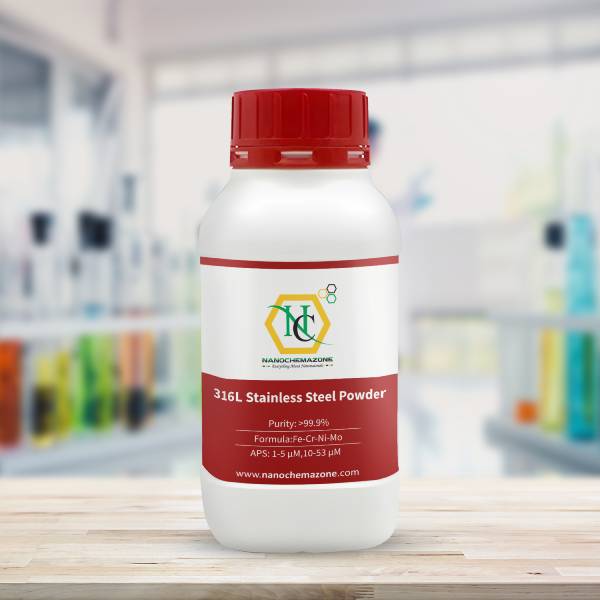
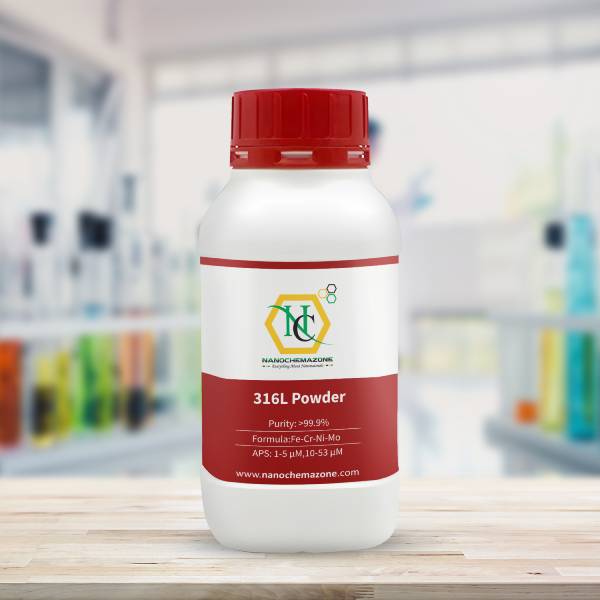
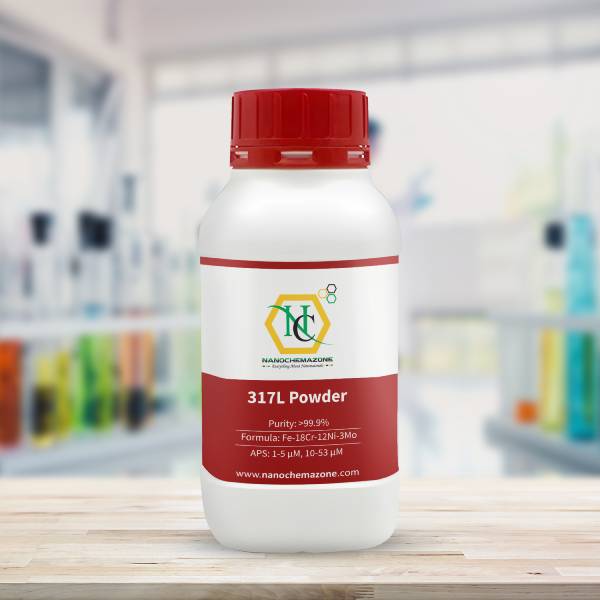
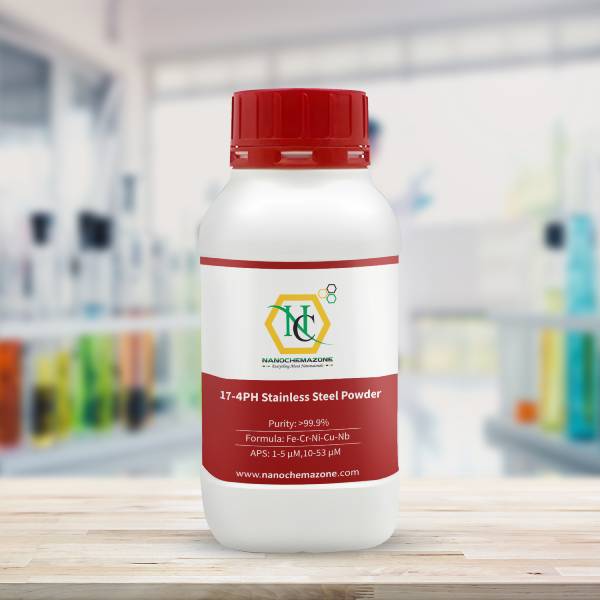
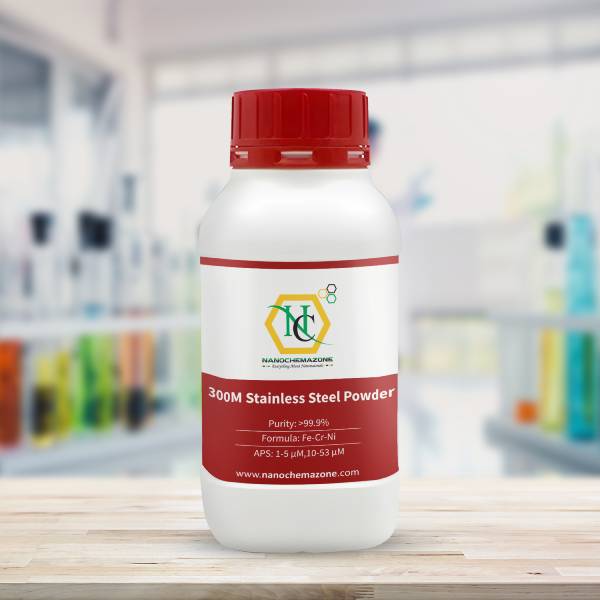

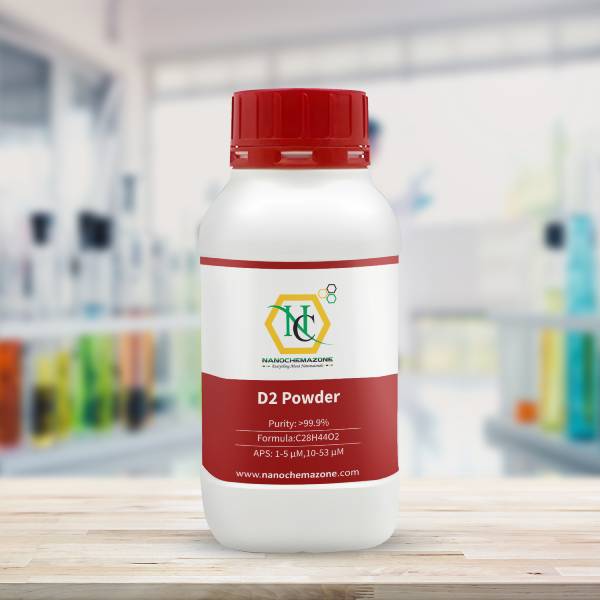
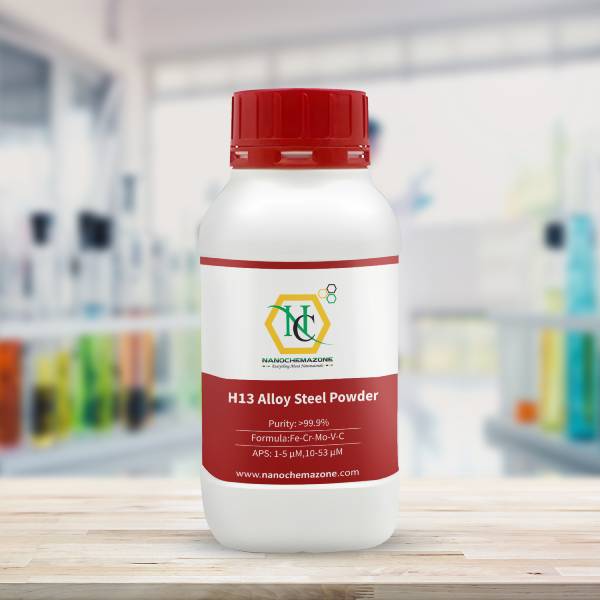
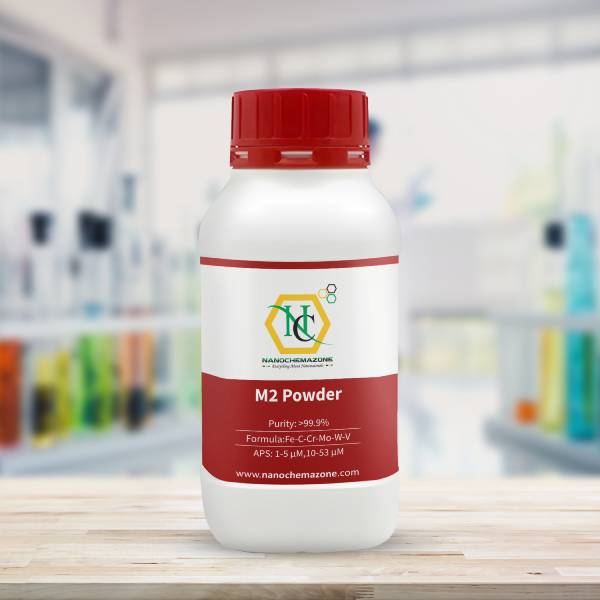
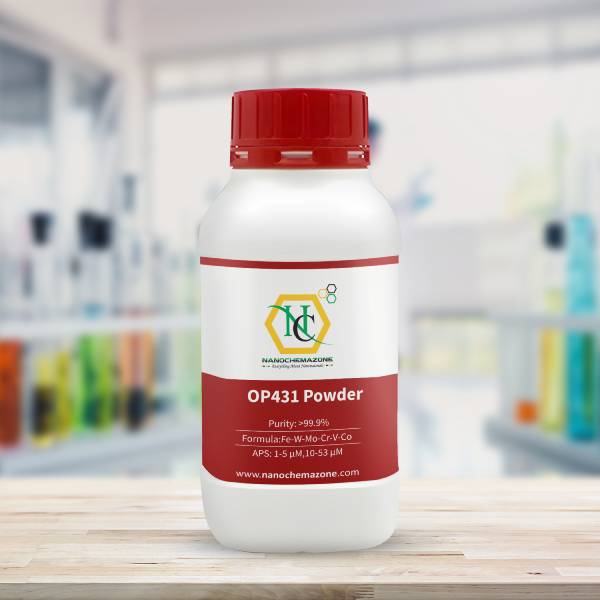
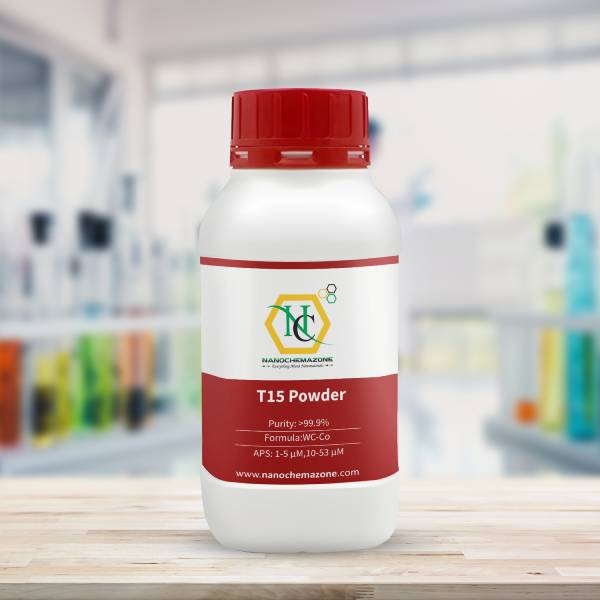
Reviews
There are no reviews yet.